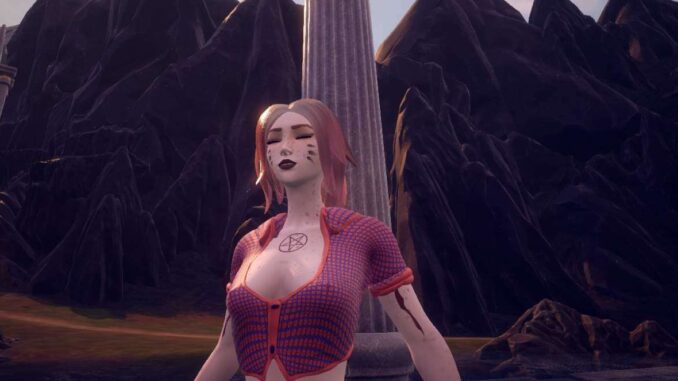
This guide is intended to help users resolve issues related to the game not starting and has been collated from various posts on the forum.
Introduction
Breeders of the Nephelym is a game that is currently in Alpha development and is not currently optimized for performance. This can lead the game to be rather resource intensive on different machines. This guide is intended to address some of the most common “game won’t start” issues that I have seen on the forums.
System Requirements
First, and foremost, ensure that your system meets the minimum system requirements.
Minimum
- OS: Windows 7
- Processor: AMD FX-6300 / Intel Core i3-2100
- Memory: 4 GB RAM
- Graphics: AMD Radeon HD 7950 / NVIDIA GTX 750 Ti
Recommended
- OS: Windows 10
- Processor: AMD Ryzen 7 1700+ / Intel Core i7-3770+
- Memory: 16 GB RAM
- Graphics: AMD Vega 64+ / NVIDIA GTX 1080 Ti+
Of these requirements, the DirectX (DX11) requirements are the most important. To confirm your DirectX settings you can use the build in DirectX Diagnostic Tool by pressing Windows key + R and typing “dxdiag”.
Configuration Files
If everything checks out then it is time for some editing to see if the game can be successfully launched. This game uses the Unreal Engine 4 and features configuration files that can be edited with any text editor (Notepad, Notepad++, Sublime Text, etc).
The path to these configurations is:
- %LOCALAPPDATA%RadiantSavedConfigWindowsNoEditor
The first common “game won’t start” issue is a Black/Blank screen. Many users have reported that they have to wait many minutes (some saying 15+ minutes) before seeing the splash screen. This seems like an obscene amount of time to wait for a game to start, so the first file to look at is “Game.ini”. In this file you can adjust the graphics quality from Highest to Lowest with 0 being the “Low” setting and 3 being the “Ultra” setting. Change the “GraphicsQuality” Setting appropriately. For example:
- GraphicsQuality=1
Save the file and relaunch the game.
If the issue continues then the next file to look at is “GameUserSettings.ini”. This file contains initial settings for fullscreen and resolution (and some settings that may not be implemented yet).
If this is the case, the first thing to try is renaming “GameUserSettings.ini” to “GameUserSettings.old” and relaunching the game. This should cause the file to be rebuilt. If the game launches to the splash screen, resolution settings can be changed in the UI.
If the game doesn’t launch, the settings will have to be adjusted in the text editor.
First set the “FullscreenMode” value to FullscreenMode=1 (this will turn full screen off). Save the file and relaunch the game.
Resolutions
If this hasn’t resolved the issue, the next is to set your screen resolution. It is a known issue with the Unreal Engine that it does not support “stretched” resolutions, so be sure to try a non-stretched resolution first (examples are below).
Set the “ResolutionSizeX” and ResolutionSizeY” values to something appropriate for your machine
- ResolutionSizeX=1920 ResolutionSizeY=1080
And set the “bUseDynamicResolution” value to false:
- bUseDynamicResolution=False
This should prevent the engine from trying to use a stretched resolution if your machine is using one.
Examples of native resolutions:
- 1920 x 1080
- 1680 x 1050
- 1600 x 900
- 1440 x 900
- 1400 x 1050
- 1366 x 768
- 1360 x 768
- 1280 x 1024
- 1280 x 960
- 1280 x 800
- 1280 x 768
- 1280 x 600
- 1152 x 864
- 1024 x 768
- 800 x 600
Registry Editing
Another common crash is related to DirectX error messages with one common error stating “Unreal Engine Exiting Due To D3D Device Lost”. This can be caused by your graphics card overheating or the graphics card taking to long to respond.
The first solution is to ensure that your machine and graphics card have adequate airflow. If that is the case, the next fix is to edit your registry.
Be Warned! Editing your registry can adversely affect your machines performance so be sure to save a back up of your registry before proceeding.
- Press the Windows key and type “regedit” to open the registry editor.
- Select File -> Export to save a current version of your registry
- Navigate to HKEY_LOCAL_MACHINESYSTEMCurrentControlSetControlGraphicsDrivers
- Right click on the GraphicsDrivers “folder” in the left hand file pane/tree and select New -> DWORD (32-bit) value
- A new value will be created in the right hand panel. Name this value TdrDelay
- Right click this new value and select modify.
- Ensure that Decimal is selected and set the value to 10
- Press “OK” to save the entry and reboot your system
DirectX Feature Level 10
Another error often seen is “DirectX 11 Level 10”. This has been reported as a crash or an error. I found this information and potential fixes at the below link:
The error “DX11 feature level 10.0 is required to run the engine” appears when the system does not have the appropriate Direct3D Hardware Feature Level required by the game engine. This particular error message is signaling that the application engine is unable to use Direct 3D Feature Level version 10.0.If the operating system has the latest DirectX version, the error is usually a sign that the GPU doesn’t meet the minimum system requirements or is running on outdated driver software. Users will encounter this error when trying to run games and other applications that require extensive graphical processing.
A lot of users are confusing the DirectX runtime environment with the Direct3D Hardware Feature Level. The DirectX Runtime describes the DirectX version that OS software can support. On the other hand, the Direct3d Hardware Feature Level describes the support that your video hardware (GPU) provides.
With this in mind, having the latest DirectX runtime environment installed on your PC does not mean that your hardware is capable of supporting Direct3D Hardware Feature Level 10.0. Even if your Windows version is equipped to handle the latest DirectX APIs, your GPU card might not support the required feature levels. This is often the case with older or integrated GPUs.
If you have Windows 10, DirectX 12.0 Runtime was automatically installed with the operating system (assuming that you have the latest Windows updates). But in order to use the new DirectX APIs, your GPU card needs to support them.
To confirm this and check which DirectX version is supported by your OS, you’ll need to run the DirectX Diagnostic Tool (dxdiag). This built-in Windows tool can be accessed on any Windows version by opening a Run box (Windows key + R) and typing “dxdiag“.
You can view your DirectX runtime version under System Information in the System tab.
In order to see if your GPU is capable of supporting the required feature levels, go to the Display tab under Drivers and see which Feature Levels are supported by your graphics card.
Visual C++ Redistributable
And finally the developer has reported that some new runtimes may need to be installed for future builds to run correctly. These files are Visual C++ redistributable packages and can be found here:
Remember that this game only support x64 architecture so there is no need for the x86 redistributable.


Be the first to comment